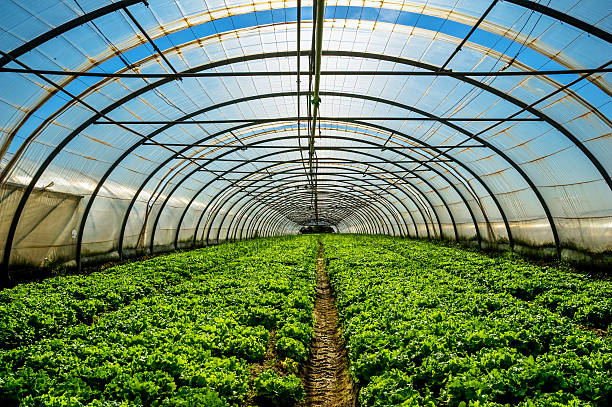Greenhouse Farming: Making Best Use Of Plant Yields and Sustainability
Are you seeking to maximize your plant yields while advertising sustainability? Look no better than greenhouse farming. With managed environments and lowered water usage, greenhouse farming offers the best solution for year-round manufacturing of fresh produce. By utilizing the power of modern technology and sustainable methods, you can ensure a plentiful harvest while reducing your ecological effect. Discover the benefits of greenhouse farming and begin profiting today!
Benefits of Greenhouse Farming
Are you questioning what makes greenhouse farming so beneficial? Well, let me tell you! Among the major benefits of greenhouse farming is the capacity to control the setting in which plants are grown. With a greenhouse, you can control variables like light, temperature, and moisture to enhance plant development. This means that you can grow crops throughout the year, no matter the weather conditions outside.
One more benefit of greenhouse farming is the decrease in water usage. Greenhouses are designed to be water-efficient, with systems that recycle and record water, lessening waste. This is particularly vital in areas where water deficiency is an issue. By utilizing water much more efficiently, greenhouse farming assists to conserve this valuable source.
Additionally, greenhouse farming permits far better pest and illness monitoring. With the regulated environment, it is much easier to manage the spread and protect against of pests and conditions. This lowers the demand for hazardous pesticides, making greenhouse-grown crops safer and a lot more eco-friendly.
Furthermore, greenhouse farming offers security versus extreme weather condition events. Plants expanded in greenhouses are protected from hefty rainfall, solid winds, and hailstorms, which can harm or damage exterior plants. Monarch Farm Greenhouse Utah. This defense ensures a more reputable and steady plant return, even during unpredictable weather

Optimizing Plant Yields With Regulated Settings
To take full advantage of crop returns in greenhouse farming, you can attain ideal results by regulating the environment. By meticulously taking care of elements such as temperature, light, carbon, and humidity dioxide degrees, you can produce the perfect problems for your crops to thrive. Among the essential benefits of greenhouse farming is the capability to regulate these ecological aspects, allowing you to customize them to the particular demands of each plant. For instance, you can readjust the temperature to advertise faster development during the day and lower it slightly at evening to imitate all-natural changes. In a similar way, you can manage moisture levels to stop illness and guarantee appropriate transpiration. By giving the best quantity and high quality of light, you can expand the growing period and increase yields. In addition, by controlling carbon dioxide degrees, you can enhance photosynthesis and motivate energetic development. By executing these managed settings, you can make best use of crop yields and attain regular, top quality fruit and vegetables throughout the year.
Promoting Sustainability Through Greenhouse Farming
Make best use of sustainability in greenhouse farming by carrying out efficient source monitoring techniques. Integrating lasting techniques in greenhouse layout, such as utilizing energy-efficient products and maximizing natural lighting, can even more improve sustainability. By taking on these source management methods, you can contribute to a much more lasting future in greenhouse farming.
Minimizing Water Use in Greenhouse Farming
By implementing reliable water monitoring strategies, you can considerably lower water usage in greenhouse farming. In addition, monitoring and managing the humidity levels inside the greenhouse can protect against unnecessary water loss. By embracing these water-saving techniques, you can reduce water waste, preserve resources, and produce an extra sustainable future for greenhouse farming.
Year-Round Production of Fresh Generate in Greenhouses
Greenhouses offer a regulated environment that permits you Click Here to grow plants regardless of the exterior weather problems. Greenhouses can be outfitted with home heating and cooling systems to maintain optimum temperatures for various crops. By executing these methods, you can take full advantage of the performance of your greenhouse and click here for more delight in a constant supply of fresh produce all year long.
:max_bytes(150000):strip_icc()/GettyImages-1221376177-a86b340094864992a4ecbcb459093d7b.jpg)
Conclusion
To conclude, greenhouse farming supplies countless advantages for maximizing crop yields and advertising sustainability. By making use of regulated atmospheres, farmers can maximize expanding problems and increase efficiency. Furthermore, greenhouse farming enables lowered water usage, making it an eco friendly selection. The capability to create fresh fruit and vegetables year-round in greenhouses makes sure a constant supply of nourishing food (Monarch Residential Greenhouse Utah). Generally, greenhouse farming is a sustainable and effective method for fulfilling the needs of an expanding populace while lessening ecological effect.
One of the major benefits of greenhouse farming is the capacity to manage the setting in which plants are expanded.To take full advantage of crop returns in greenhouse farming, you can attain ideal results by regulating the atmosphere. One of the essential benefits of greenhouse farming is the capability to regulate these ecological elements, permitting you that site to customize them to the specific demands of each crop.By implementing effective water monitoring methods, you can significantly lower water usage in greenhouse farming.In verdict, greenhouse farming offers countless advantages for maximizing plant returns and promoting sustainability.